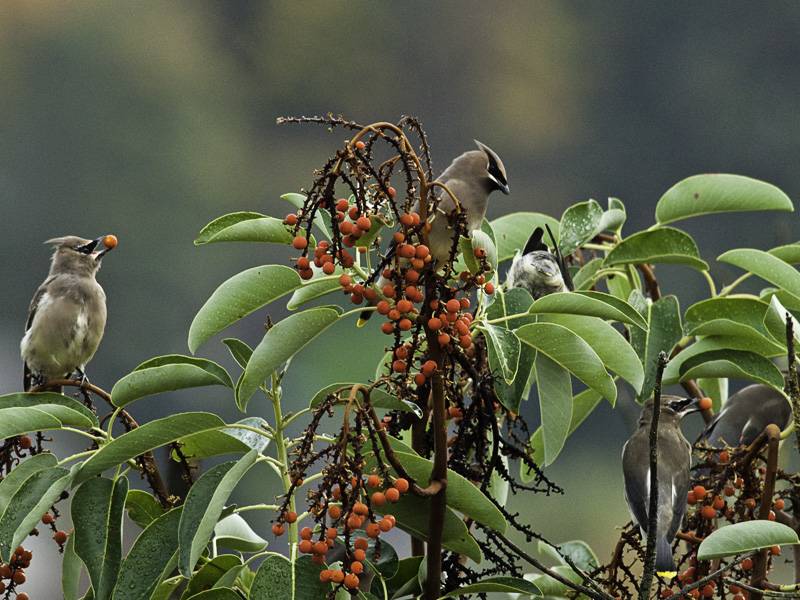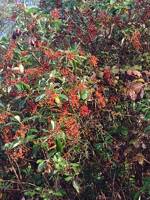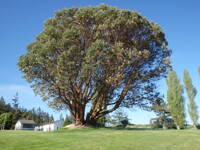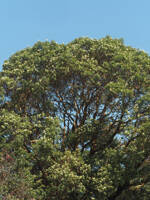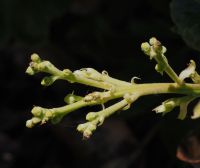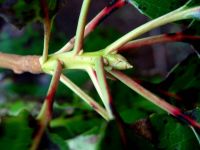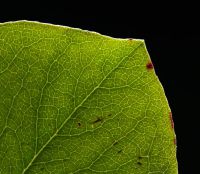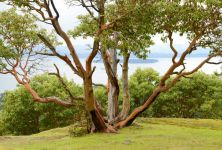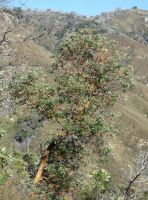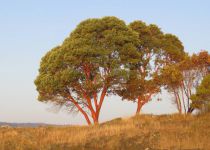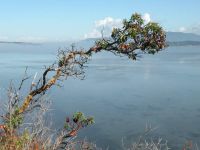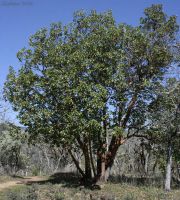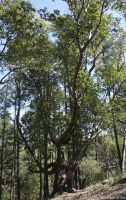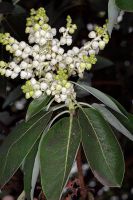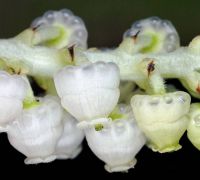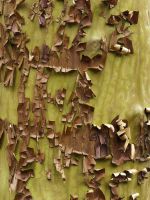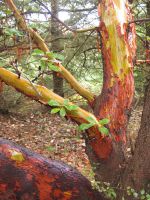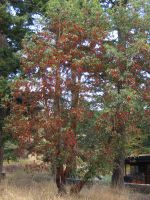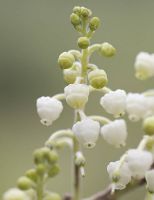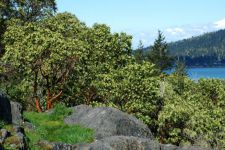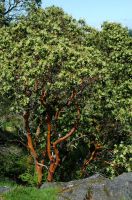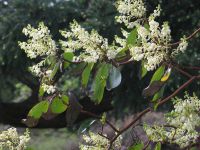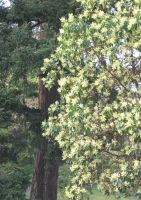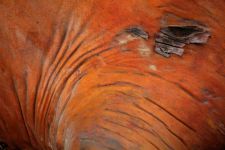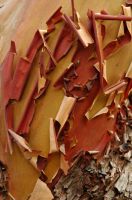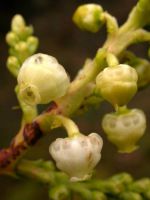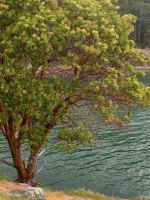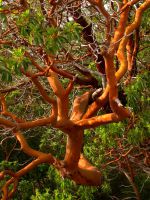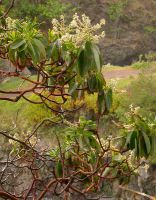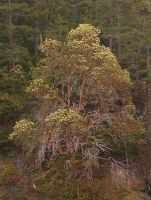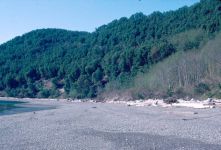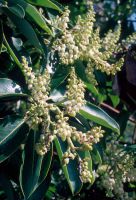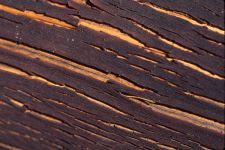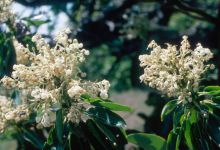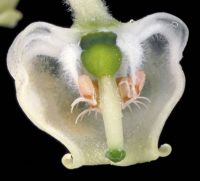Distribution: Occurring west of the Cascades crest and in the Columbia River Gorge in Washington; British Columbia to California.
Habitat: Chiefly in drier, often rocky areas at low elevations.
Flowers: April-June
Origin: Native
Growth Duration: Perennial
Conservation Status: Not of concern
Pollination: Bumblebees, bees, flies, hummingbirds
Trees to 30 m. tall, the bark smooth and chartreuse when young, aging to dark brownish-red.
Leaves alternate, evergreen, smooth, shiny, ovate-oblong to elliptic, glabrous, serrate to entire, 7-15 cm. long.
Flowers in large, terminal, compound racemes; flowers white, 6-7 mm. long, the corolla 5-lobed, urn-shaped; stamens 10, included in and borne on the corolla; anthers with two short, reflexed awns, opening by 2 slit-like pores; ovary superior,
Fruit an orange to red berry, globose, 1 cm. in diameter, covered with small projections.
Publication: Fl. Amer. Sept. 1: 282. 1813.
PNW Herbaria: Specimen records of Arbutus menziesii in the Consortium of Pacific Northwest Herbaria database.
WA Flora Checklist: Arbutus menziesii checklist entry.
OregonFlora: Arbutus menziesii information.
E-Flora BC: Arbutus menziesii atlas page.
CalPhotos: Arbutus menziesii photos.
USDA Plants: Arbutus menziesii information.



